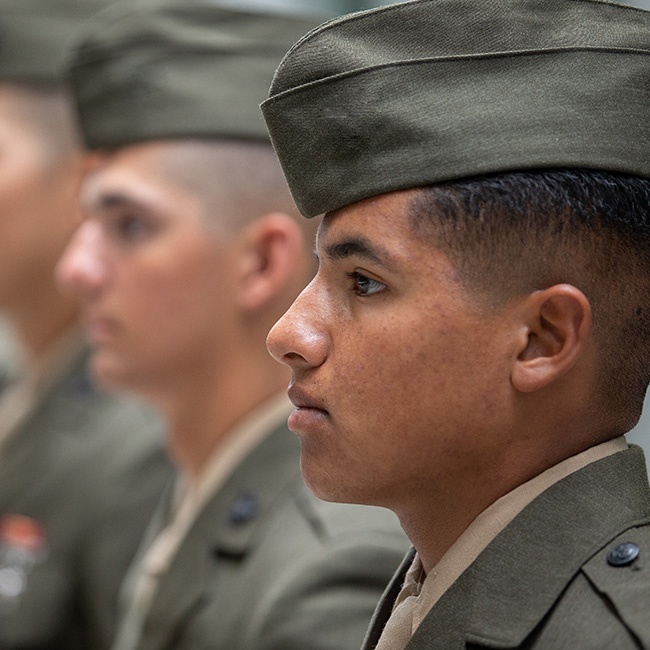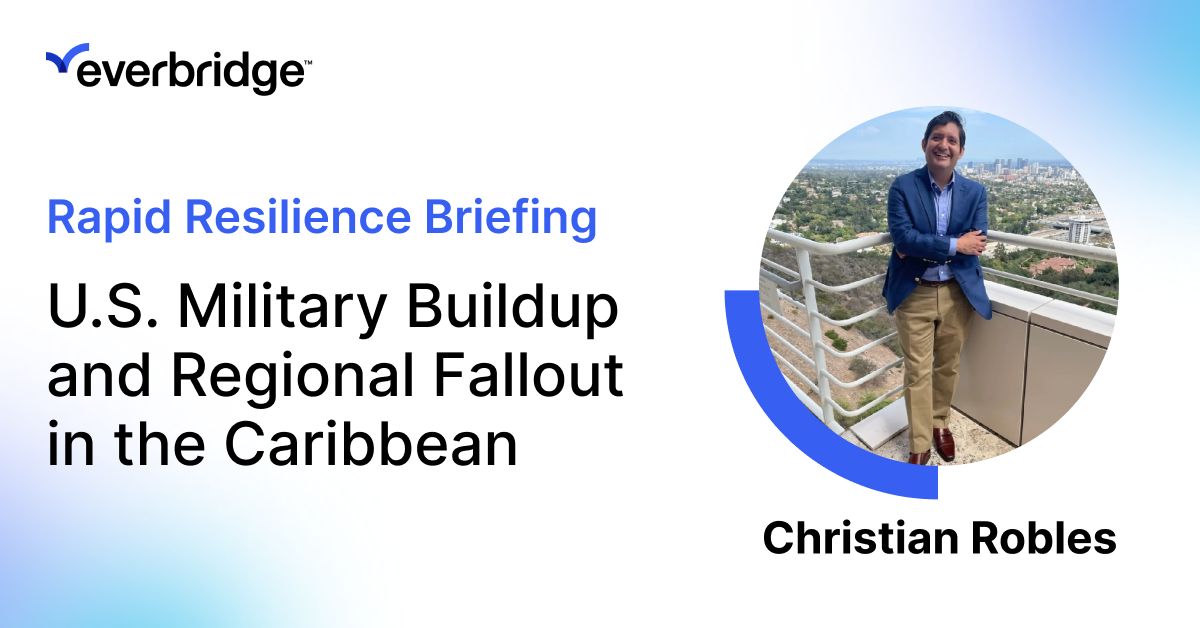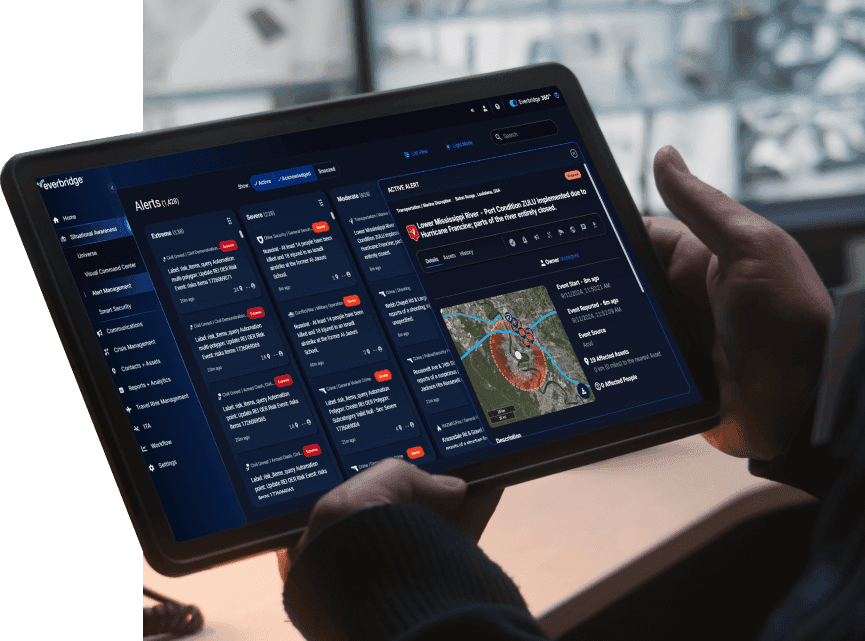Full transcript
00:05
Hello, my name is Christian Robles and I’m the regional analyst for Latin America in the Caribbean here at Everbridge. We’ve been following this story since mid August when reports first surfaced that the US was deploying naval and air assets into the southern Caribbean.5sAdd a noteJump to
00:22
Early positioning framed as a counter narcotics buildup against so-called narot terrorists in the region. Two months later, that buildup has become a live operation. The US has now conducted 10 confirmed strikes. Eight in the Caribbean Sea and two in the Eastern
00:40
Pacific, killing at least 43 people and capturing two others. The latest strike hit a Drenad Aagua vessel in international waters. And hours later, Washington ordered the deployment of the Gerald R. Ford carrier strike group into the region under US southern command.
01:02
This marks a turning point. What began as targeted interdictions is now a full-scale power projection in the Western Hemisphere. And looking ahead, if this continues, several outcomes are possible. First, the operation could expand beyond the sea. President Trump has said he
01:22
won’t seek a declaration of war and that land operations will be next. That raises the prospect of covert actions inside Venezuela or air strikes on inland targets. Redrawing the map of US engagement in South America. Second, regional alignment is hardening. Colombia accuses Washington of
01:45
extrajudicial killings while Venezuela is mobilizing forces along its borders and warning of asymmetrical warfare. Meanwhile, Trinidad and Tobago is moving the other direction, hosting the destroyer USS Graveley and 2,000 Marines this week for joint exercises. The
02:05
island has become Washington’s southern anchor, a forward partner now facing greater exposure to Venezuelan cyber and intelligence pressures. And third, the commercial impact for shipping energy and insurance. The southern Caribbean is shifting from a patrol zone to a contested operating environment.
02:29
It’s expected temporary port closures in Trinidad and Tobago, higher war risk and detention premiums within 200 nautical miles of Venezuelan waters and strict sanctions screenings as the US expands terror designations. If exclusion zones appear or if Venezuela begins shadowing commercial
02:49
traffic, markets will react quickly. Since August, this campaign has evolved from deterrence to execution. The language deployments and now the carrier group all signal a sustained operational phase. If the tempo continues, the next step could move Finland. A shift that would
03:09
rattle regional stability and the confidence of US companies moving goods, fuel or data through these routes. We’ve been covering this from all angles and the takeaway is clear. We recommend monitoring unfolding events. Each new strike, asset movement signals that this
03:30
operation isn’t slowing, and the longer it runs, the harder it becomes to unwind. I’m Christian Robas, and we’ll continue tracking how these developments shape risk and stability across the region in the days ahead.





